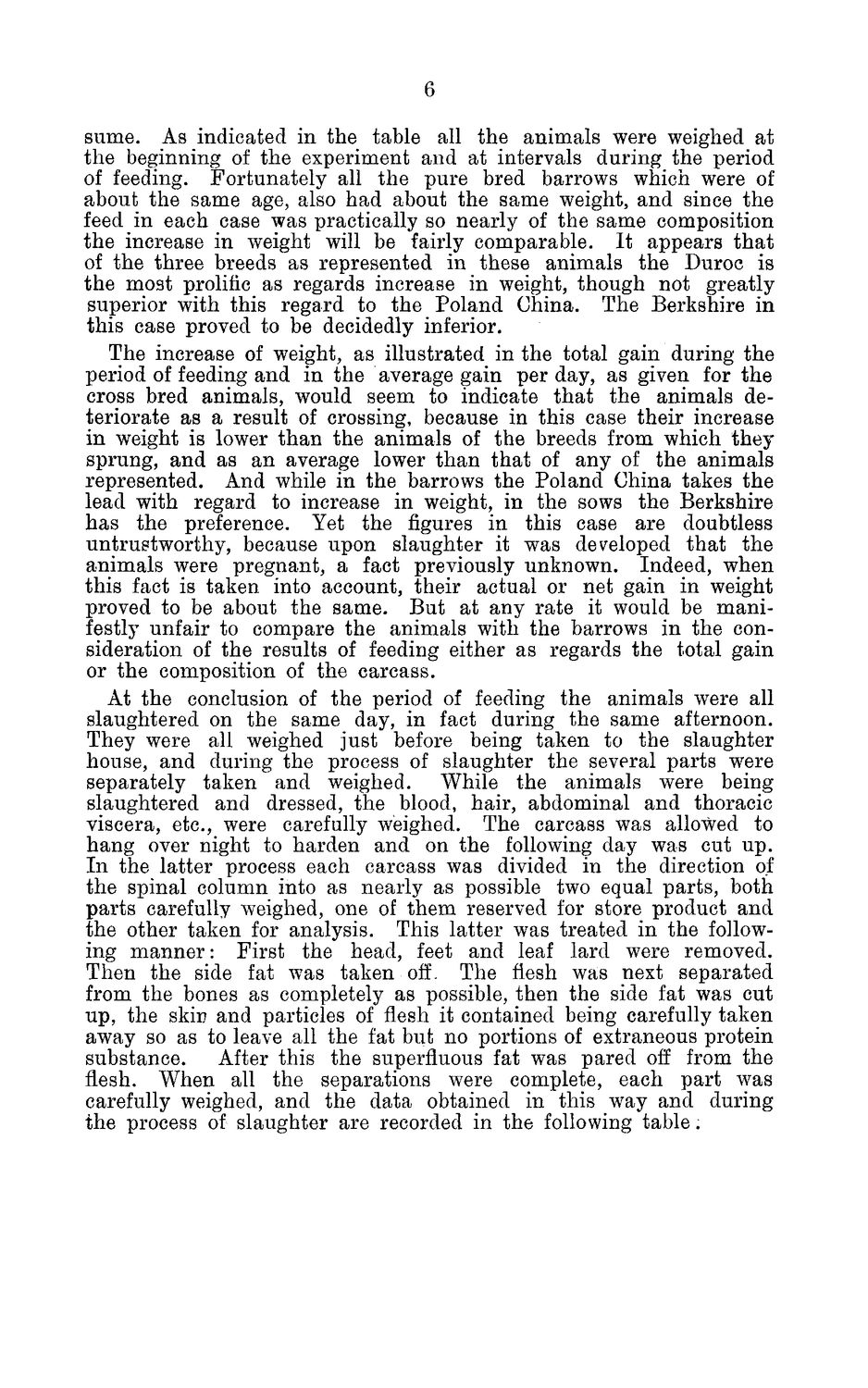| |
| |
Caption: Board of Trustees Minutes - 1884
This is a reduced-resolution page image for fast online browsing.

EXTRACTED TEXT FROM PAGE:
6 sume. As indicated in the table all the animals were weighed at the beginning of the experiment and at intervals during the period of feeding. Fortunately all the pure bred barrows which were of about the same age, also had about the same weight, and since the feed in each case was practically so nearly of the same composition the increase in weight will be fairly comparable. It appears that of the three breeds as represented in these animals the Duroc is the most prolific as regards increase in weight, though not greatly superior with this regard to the Poland China. The Berkshire in this case proved to be decidedly inferior. The increase of weight, as illustrated in the total gain during the period of feeding and in the average gain per day, as given for the cross bred animals, would seem to indicate that the animals deteriorate as a result of crossing, because in this case their increase in weight is lower than the animals of the breeds from which they sprung, and as an average lower than that of any of the animals represented. And while in the barrows the Poland China takes the lead with regard to increase in weight, in the sows the Berkshire has the preference. Yet the figures in this case are doubtless untrustworthy, because upon slaughter it was developed that the animals were pregnant, a fact previously unknown. Indeed, when this fact is taken into account, their actual or net gain in weight proved to be about the same. But at any rate it would be manifestly unfair to compare the animals with the barrows in the consideration of the results of feeding either as regards the total gain or the composition of the carcass. At the conclusion of the period of feeding the animals were all slaughtered on the same day, in fact during the same afternoon. They were all weighed just before being taken to the slaughter house, and during the process of slaughter the several parts were separately taken and weighed. While the animals were being slaughtered and dressed, the blood, hair, abdominal and thoracic viscera, etc., were carefully weighed. The carcass was allowed to hang over night to harden and on the following day was cut up. In the latter process each carcass was divided in the direction of the spinal column into as nearly as possible two equal parts, both parts carefully weighed, one of them reserved for store product and the other taken for analysis. This latter was treated in the following manner: First the head, feet and leaf lard were removed. Then the side fat was taken off. The flesh was next separated from the bones as completely as possible, then the side fat was cut up, the skin and particles of flesh it contained being carefully taken away so as to leave all the fat but no portions of extraneous protein substance. After this the superfluous fat was pared off from the flesh. When all the separations were complete, each part was carefully weighed, and the data obtained in this way and during the process of slaughter are recorded in the following table.
| |